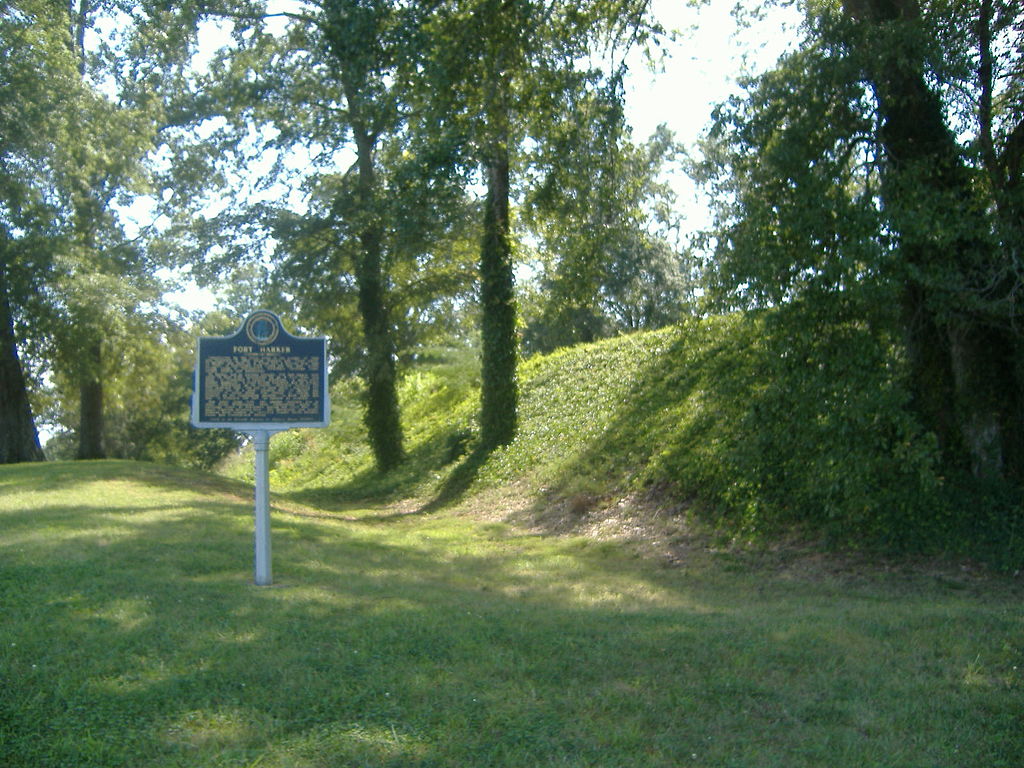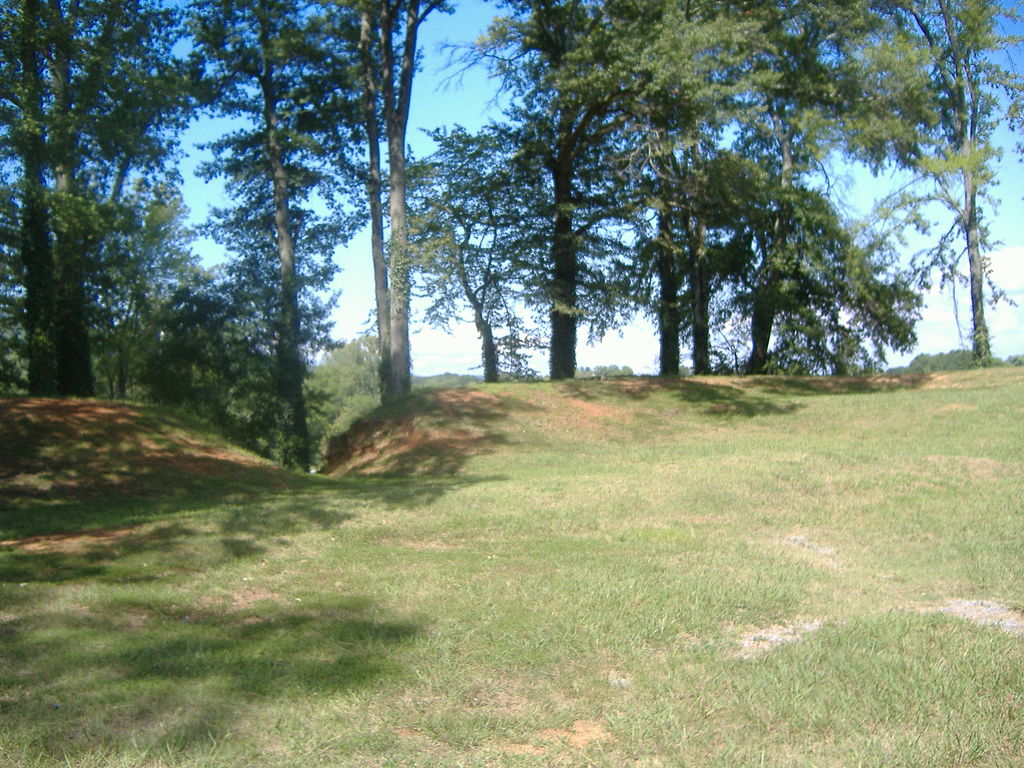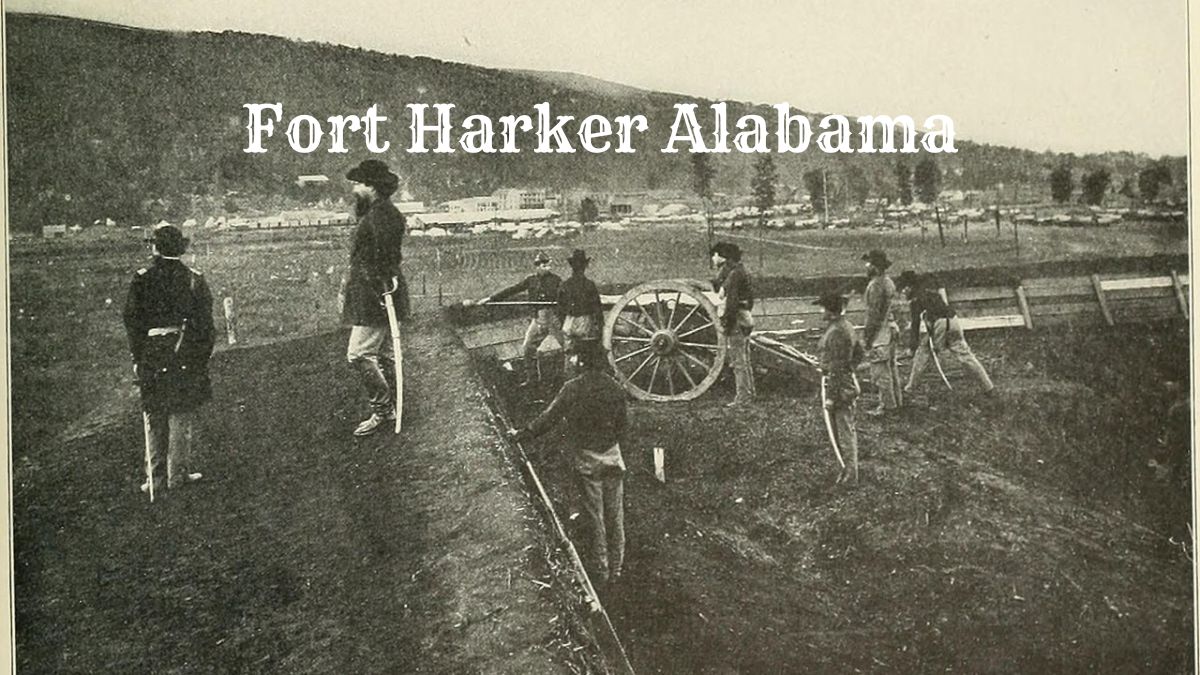Fort Harker, a key Union U.S. Civil War fort, played a pivotal role in the American Civil War.
Strategically located to control vital railroad lines, it was instrumental in Gen. William Rosecran’s successful campaigns against Confederate troops.
Serving as a headquarters for the Union Army, the fort’s strategic significance is commemorated by a historical marker. Fort Harker’s legacy as a crucial military installation endures, reflecting its importance in shaping the Civil War’s outcome.
Today, its inclusion in the National Register of Historic Places ensures its preservation as a symbol of American resilience and strategic military prowess.
Historic Fort Harker in Alabama

Fort Harker played a critical role during the American Civil War and has since been recognized for its historic importance through its inclusion in the National Register of Historic Places.
Role in the American Civil War
During the American Civil War, Fort Harker was a strategic location used by the Union Army. It served as a key defensive fortification and played a significant role in controlling important railroad lines.
The fort enabled Union General William Rosecrans to launch successful campaigns against Confederate forces.
Because of its strategic position, Fort Harker was instrumental in the Union’s ability to maintain supply lines and troop movements.
The control of railroad lines facilitated the rapid and efficient transport of soldiers, supplies, and munitions, making it a pivotal point in the Union U.S. Civil War efforts.
Inclusion in the National Register of Historic Places
Fort Harker was later recognized for its historical importance by being included in the National Register of Historic Places.
This designation underscores the fort’s value as a site of national historical significance, preserving its legacy for future generations.
The inclusion highlights Fort Harker’s role in shaping American history, particularly during the Civil War.
The recognition ensures the site’s protection and maintenance, allowing visitors to learn about and honor its critical events and figures.
The fort remains a valuable educational and commemorative site.
Architectural Structure and Locations

Fort Harker in Alabama boasts unique and strategically designed fortifications and geographic significance. These elements combined have historically cemented its usefulness and defensive capabilities.
Design and Construction of Fortifications
Fort Harker’s design incorporates several tactical features.
The fort includes an earthen redoubt reinforced with wood and metal, making it more resilient against artillery.
Meanwhile, cannon platforms are strategically positioned for optimal field coverage, providing defensive strength.
The 8-sided wooden blockhouse serves as the cornerstone of the fort’s defensive structure. It offers a wide range of visibility and protection.
Smaller redoubts surround the main fortification, creating layered defense zones. The bomb-proof powder magazine is another critical component, storing ammunition safely below ground, thereby minimizing risk from enemy fire.
Geographic Importance of Fort Harker
Located near the City of Stevenson and adjacent to the Tennessee River, Fort Harker’s position is significant.
The proximity to the river ensured easy supply transport and a strategic vantage point over a crucial waterway.
This location also made the supply depot easily accessible, thus enhancing operational readiness.
The fort’s drawbridge entrance and the deep, dry moat added to its defensive advantages.
These features complicated any direct assault, thereby enhancing overall security. Fort Harker’s strategic position allowed it to control key routes and supply lines, amplifying its importance during military operations.
Military Engagements and Units

Fort Harker in Alabama was pivotal in various military campaigns during the Civil War. This section covers some key battles and the units that played notable roles.
Key Military Actions and Campaigns
Fort Harker saw significant military actions throughout the Civil War.
One of the major engagements included Union plans to disrupt Confederate supply lines, leading to repeated skirmishes.
Noteworthy battles involved the 18th Alabama and the 63rd Ohio, which faced each other in harsh conditions.
Union troops aimed to capture strategic points held by Confederate forces, leading to decisive confrontations.
The position of Confederate General Braxton Bragg near Fort Harker was a central focus during several campaigns.
His forces fortified the area but faced increasing pressure from Union advances.
These engagements were critical for both sides, as control over Fort Harker influenced broader military strategies.
Notable Military Units and Figures
Several military units and figures were crucial to the operations at Fort Harker.
The 18th Alabama played a significant role in defending the fort, displaying resilience against Union assaults.
They were involved in various defensive operations that tested their endurance and tactical skills.
Union troops, including the 63rd Ohio, were instrumental in the offensive strategies, deliberately trying to breach Confederate defenses.
Their actions contributed to the larger Union strategy of reclaiming critical forts and railways.
The 5th Alabama Band is another notable entity, providing morale-boosting support.
This musical unit was highly regarded for maintaining troop morale during the demanding campaigns.
The presence of such units underscored the multifaceted nature of the military organization at Fort Harker.
Explore More: Army Forts in Alabama
Cultural Impact and Commemoration
Fort Harker, located in northeastern Alabama, is significant due to its associations with Crow Creek and its role in various historical periods.
This section explores how the fort is commemorated and recognized by historical markers and modern events.
Monuments and Historical Markers
Numerous historical markers and monuments stand as reminders of Fort Harker’s role and heritage.
One prominent marker details the fort’s strategic significance during the Civil War and its proximity to Crow Creek, which is vital in logistical operations.
The Friends of Fort Harker, a dedicated group, has worked to preserve these markers. They maintain the site and provide information to visitors.
Their efforts ensure that the historical narratives associated with the fort remain accessible to the public.
Historical markers within the Stevenson Historic District also acknowledge Fort Harker. These markers offer context about the fort’s relationship with the surrounding area and its impact on local history.
Modern Recognition and Events
Today, Fort Harker’s legacy is celebrated through various events and activities.
Stevenson Depot Days, an annual event, is one occasion on which the community gathers to remember and celebrate the historical significance of the fort and the surrounding area.
Local historical societies and the Friends of Fort Harker often organize educational programs and reenactments.
These events attract history enthusiasts and provide immersive experiences that bring the fort’s history to life.
The fort also plays a role in modern educational efforts.
Schools and educational programs frequently include visits to Fort Harker, integrating its history into the broader narratives of northeastern Alabama’s past.
Explore More: 19 Historic Forts in Alabama
Preservation Efforts and Legal Aspects
Fort Harker in Alabama has been the focus of historic preservation efforts to maintain its structural and cultural integrity.
National Register of Historic Places
Fort Harker has been listed on the National Register of Historic Places. This listing provides important legal protections, ensuring that any changes or developments around the fort are carefully managed and regulated.
Roles of Various Organizations
The American Historical Commission has played a vital role in overseeing these preservation efforts. They ensure that any restoration work aligns with historical accuracy and integrity.
Community Involvement
Local organizations like the VFW Post have also been involved. They often organize community events and volunteer activities to support the fort’s upkeep and promote awareness of its historical significance.
Legal Protections
Federal and state laws are in place to protect Fort Harker from unauthorized alterations or demolitions.
This includes statutes governing archaeological sites and heritage landmarks, ensuring the fort remains a preserved historical site.
Funding and Grants
Funding for preservation often comes from grants and donations.
These funds help cover the cost of maintenance, restoration, and ongoing research necessary to keep Fort Harker in good condition.
Privacy Policy
Efforts to preserve Fort Harker must comply with privacy regulations.
Particularly when dealing with archaeological finds and historical records. This ensures that sensitive information is handled responsibly.
These collaborative efforts by different stakeholders contribute to preserving Fort Harker, Alabama’s historical and cultural heritage.
Ensuring it remains a point of historical interest and education for future generations.

Cory is a website owner and content creator who enjoys fishing, history, coin collecting, and sports, among other hobbies. He is a husband and father of four.
Romans 15:4 For whatever was written in former days was written for our instruction, that through endurance and through the encouragement of the Scriptures we might have hope.

